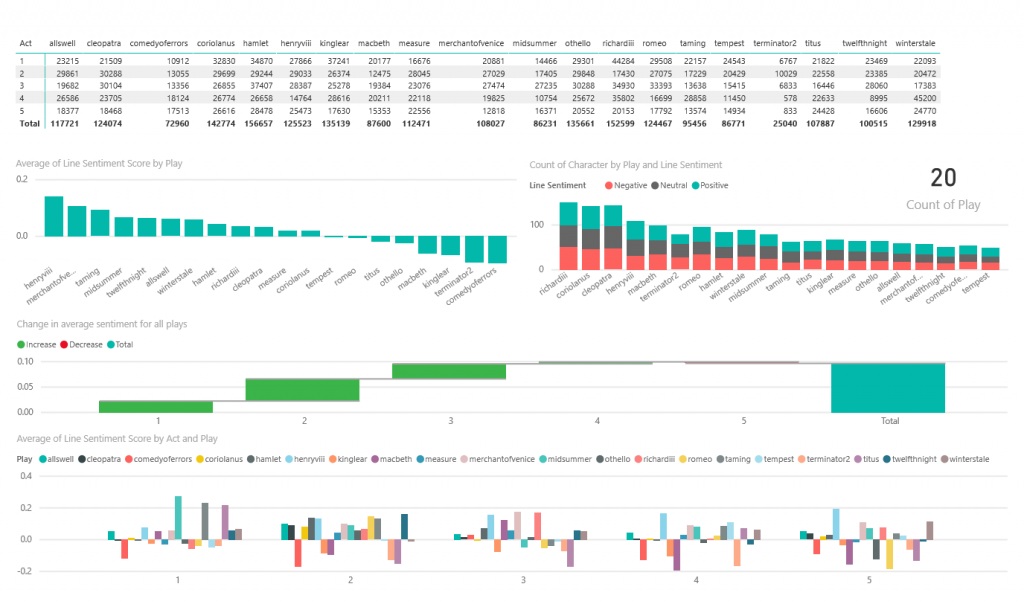Robots are teaching humans Shakespeare: All praise our new AI overlords

Humans have been analysing the works of Shakespeare for half a millennia and the meanings of those timeless plays are still being debated to this day. Now it’s the turn of artificial intelligence to have a crack at deciphering the bard’s greatest pieces of literature.
Microsoft’s Text Analytics API has been used to identify sentiment and topics within the text of 19 plays. It was also used to pick out key phrases and entities in order to shine a new light on some stories and make them easier to understand for those who fear the themes are too complex.
Phil Harvey, a Cloud Solution Architect at Microsoft UK, says it’s possible to see entire plot lines just by looking at graphs (below) created using the AI tools.
In a blog post, he writes: “Because visual examples are much easier to absorb, it makes Shakespeare and his plays more accessible. Reading language from the 16th and 17th centuries can be challenging, so this is a quick way of showing them what Shakespeare is trying to do.
Related: Best laptops 2019
“It’s a great example of data giving us new things to know and new ways of knowing it; it’s a fundamental change to how we process the world around us. We can now pick up Shakespeare, turn it into a data set and process it with algorithms in a new way to learn something I didn’t know before.”

Image credit: Microsoft
So, for example, those graphs reveal Romeo endures greater struggles with extreme emotions that Juliet. Microsoft says this challenges the stereotypes that women are more prone to emotional reactions to the ups and downs of a relationship.
Harvey adds: “It’s interesting to see that the male lead is the one with more extreme emotions,” Harvey added. “The longest lines, both positive and negative, are spoken by him. Juliet is steadier; she is positive and negative but not extreme in what she says. Romeo is a fellow of more extreme emotion, he’s bouncing around all over the place.
“Macbeth is also interesting because there are these two peaks of emotion, and Shakespeare uses the wives at these points to turn the story. I also looked at Helena and Hermia in A Midsummer Night’s Dream, because they have a crossed-over love story. They are both positive at the start but then they find out something and it gets negative towards the end.”
In order to create the graphs, Microsoft had to strip out all the stage direction from the text, before uploading it to the pre-trained API. The program gave the text scores depending on the positive or negative sentiments expressed. It wasn’t perfect. The API couldn’t figure out what was going on in Hamlet, just like the rest of us.
Could AI be a useful tool in helping us decipher the greatest works of fiction and assign new meaning based on the data? Let us know @TrustedReviews on Twitter.


